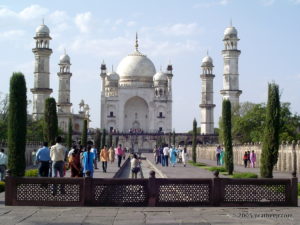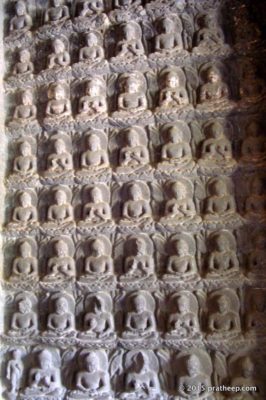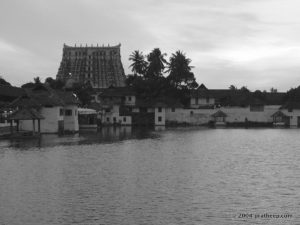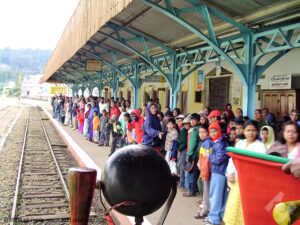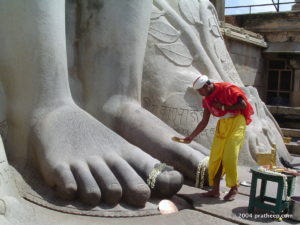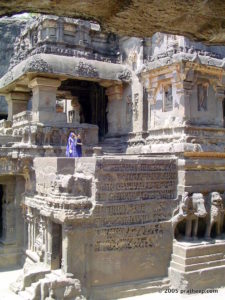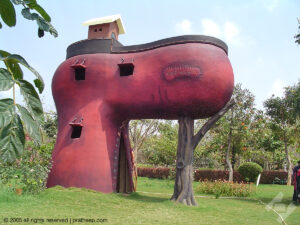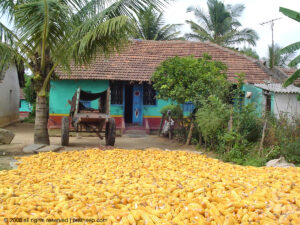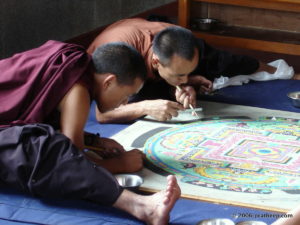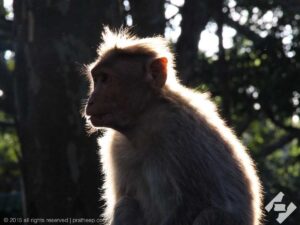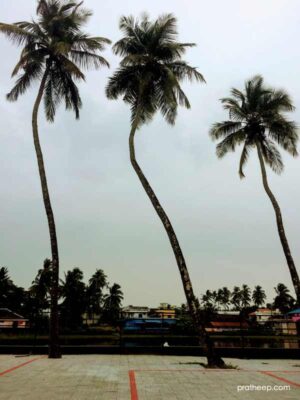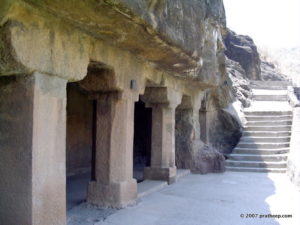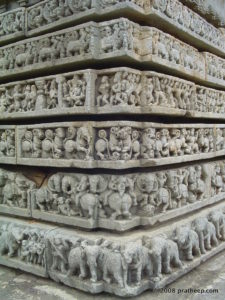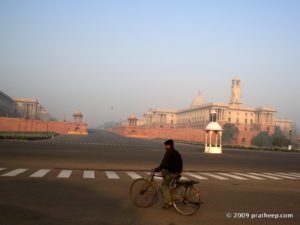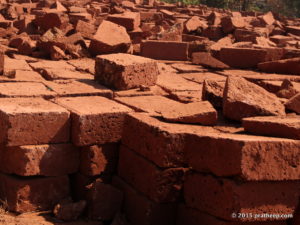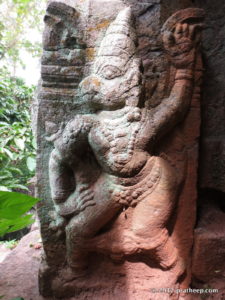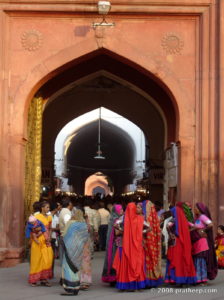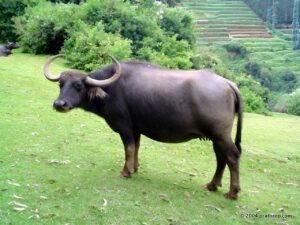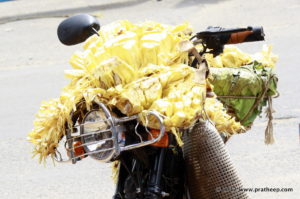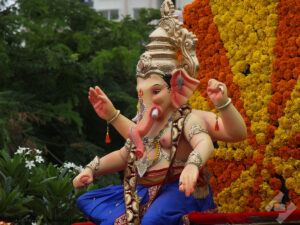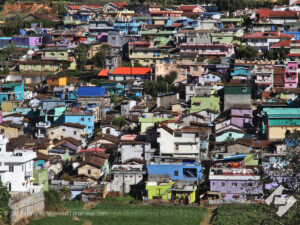Ajanta Caves
In artistic terms Ajanta is the high water mark of Indian mural art, rock cut architecture and sculpture, in that order.
In the middle of a forest range stands a steep horse-shoe shaped coffee brown rocky cliff. A stream, the Waghora river, cascades down from the cliff and traces the arc of the horseshoe valley. A chain of spacious rock cut caves made with unique architectural zeal on the vertical face of the cliff overlook the green valley beneath.
Many of the caves are generously decorated with sculptures and other patterns. Some of them are gigantic while the other shows the dexterity of the artist with its intricate details. On the flat walls and ceilings of these caves are the paintings, popularly known as the Ajanta Paintings.
There are a total of 30 caves located in the form of an arc. For the sake of easy identification the caves are primarily identified with a number, in the order of its location.
About 6 of these were places of worship known as chaityas or sanctuaries. The rest of it were Montessori and residential quarters where the monks lived, prayed and contemplated.
Though the caves are located one next to another, these were neither executed during the same period nor they were part of a single architectural master plan. See Discovery of Ajanta Caves.
The caves of Ajanta can be broadly classified into two distinct groups.
Six of the 30 caves were built during the early pursuit of Buddhism in the region which is during the 2nd century BC. After this initial sprout, there was a pause of about 4 centuries.
The 5th to 7th century CE has seen a feverish activity in Ajanta. About two dozen caves were built during this period. Some of the finest caves of Ajanta was conceived and executed during this second phase.
As a visitor you practically start with the Cave 1 and finish with Cave 27 following a counterclockwise tour path.
The oldest cave, that is the Caves 8, 9, 12 and 13, are located somewhere in the middle of the arc. Two of these first generation caves are sanctuaries ( Cave 9 and 10) and the other two were ( cave 12 & 13) functioning as Montessori.
Out of the later period ones 3 caves are sanctuaries (Cave 19, 26 & 29), and the rest again Montessories.
Of the 30 caves, 6 caves contain paintings on its walls. Both earlier and later period caves spots paintings. The style of paintings are however somewhat different. After all, these murals were done during two periods separated by about 400 years.
The paintings in cave 9 and 10 (both sanctuaries) represents the old style whereas caves 1, 2, 16 & 17 (all Montessories ) celebrates the high water mark of Ajanta Paintings.
Whether sanctuary or Montessori, there are some notable difference in its philosophy between the earlier and later series of caves.
True to the ethos of Buddhism during the Hīnayāna period, images of Buddha is absent in the earlier caves made during the 2nd century BC. The only exception is probably the cave 10, where an image of Buddha is carved on the “Stupa” in the hall. According to archeologists this was later carved on to this old cave during the later period of construction.
In scale and details too the later period caves are more ambitious. The sanctuaries are characterized by its vaulted (arched) halls and a stupa at the center of the semicircular quarter. A giant horseshoe shaped window stands above the porch of the sanctuary.
Monasteries are built keeping in mind the functional aspects of the residents. Some of them are multistoried and with multiple chambers inside.
All the caves face the valley and the river that flows along the arc. Originally all the caves did have some kind of a porch facing the valley separate stairways to access the river beneath. Much of it is damaged and not traceable. However you can see the traces of the original stairs of cave 16 and 17.
The contrast is astonishing. Some of the finest and oldest paintings the ancient India produced gleam on the walls of rocky caves located in the middle of nowhere. Imagine an art gallery scooped out of a volcanic rocky hill in the middle of a forest.
From an artistic point of view, aesthetics and the spiritual aura of Buddha sit in proximity with surprising ease, and rivals each other in its aesthetic appeal. Ajanta celebrate a fine blend of art, architecture and religion.
While the Ajanta Paintings steal the show, the rock cut architecture and the sculptures of Ajanta never fails to awestruck a visitor.
In religious terms Ajanta represents a series of Buddhist Montessories and sanctuaries (chaityas) built by the two traditions of Buddhism namely the Hīnayāna and Mahāyāna.
In artistic terms Ajanta is the high water mark of Indian mural art, rock cut architecture and sculpture, in that order.
From a historic perspective, Ajanta exemplifies the evolution of Buddhism in India, especially its footprints in the region during the 2nd century BC, its feverish comeback after four centuries and the eventual decline by the turn of 7th century CE.
In terms of heritage , Ajanta is one of the finest showpiece of Indian ethos, in popularity only rivaled by the Taj.
Ajanta is open to visitors. This site is under the management of Archeological Survey of India, the federal agency responsible for the preservation of such monuments in India.
Entrance Fee for Ajanta Caves
The Archaeological Survey of India (ASI) standard admission fees applicable to Ajanta caves
Citizens of India Rs.10
Citizens of SAARC Countries – Rs 10
(Bangladesh, Nepal, Bhutan, Sri Lanka, Pakistan, Maldives and Afghanistan)
Citizens of BIMSTEC Countries – Rs 10
(Bangladesh, Nepal, Bhutan, Sri Lanka, Thailand and Myanmar)
Visitors from Other countries: US $ 5 or Indian Rs. 250/- per head
(children up to 15 years admitted free)
The admission ticket is sold at the counter at Ajanta Caves.
Open from 9 A.M. to 5 P.M.
Closed on Mondays
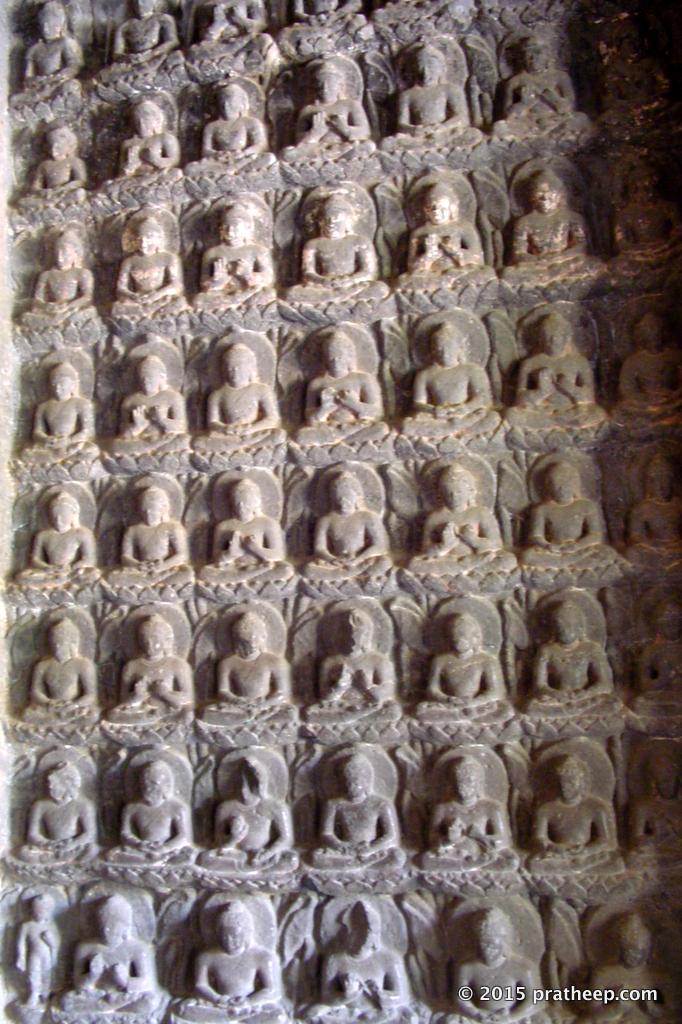
Ajanta
| Miracle of Sravasti
This is from Cave No. 7. Depicted the theme where Buddha transforms himself into a thousand Buddhas
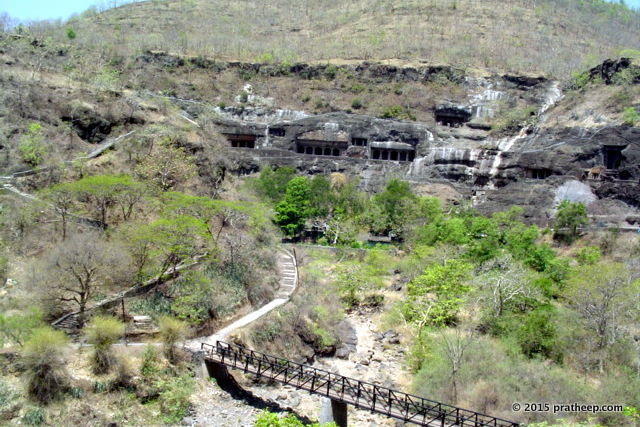
Ajanta
| Ajanta Caves
Viewed from the otherside of the hill.
GALLERY
Ajanta

Miracle of Sravasti
This is from Cave No. 7. Depicted the theme where Buddha transforms himself into a thousand Buddhas
Ajanta

Ajanta Caves
Viewed from the otherside of the hill.




